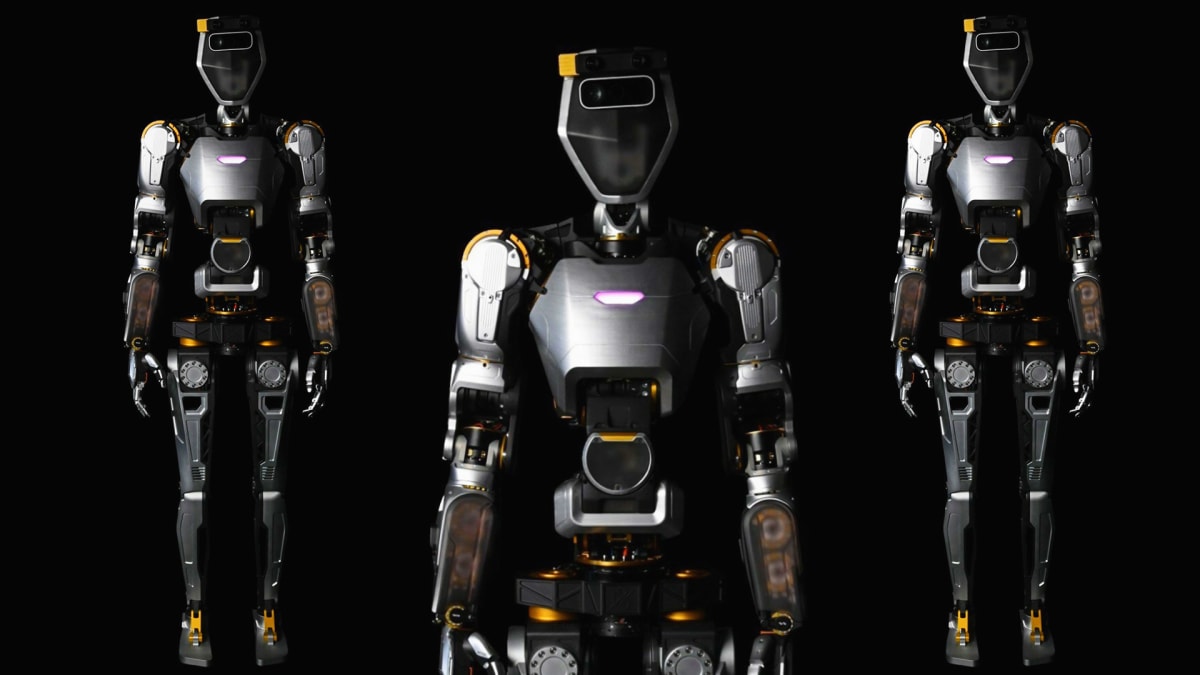
And the robots keep coming.
Earlier this year, Lowe's (LOW) got into the robot act by deploying outdoor security robots at several of its locations.
The five-foot, 400-pound egg-shaped devices were made by Knightscope (KSCP) , a Mountain View, Calif.-based security tech company.
DON'T MISS: Warren Buffett Backs Up Jim Cramer By Loading Up on a Bank Stock
Tesla (TSLA) CEO Elon Musk is looking to transform society with Optimus, a humanoid robot first shown in 2021.
The billionaire wants replace human labor with humanoid robots, using the artificial intelligence software developed by Tesla for its cars.
And on May 16, Vancouver-based Sanctuary AI unveiled Phoenix, its sixth generation general-purpose robot, which stands 5 feet 7 inches, weighs 155 pounds and can carry a payload of up to 55 pounds.
Phoenix, which has a maximum speed of 3 mph, also has “robotic hands with increased degrees of freedom…that rival human hand dexterity,” the company said.
Geordie Rose, co-founder and CEO, Sanctuary AI, said Phoenix is just a tool for "the real star of the show," Carbon, the company's proprietary AI control system, which "enables Phoenix to think and act to complete tasks like a person."
Robots Filling the People Gap
"We see a future where general-purpose robots are as ubiquitous as cars, helping people to do work that needs doing, in cases where there simply aren't enough people to do that work," Rose said in a statement.
In March, Sanctuary AI said it had completed its first commercial deployment, a week-long pilot at a store owned by the Canadian Tire Corp.
A general-purpose robot correctly completed 110 retail-related tasks, including front and back-of-store activities such as picking and packing merchandise, cleaning, tagging, labelling, and folding, the company said.
High demand for workers during an ongoing—and probably long-term—labor shortage is prompting more companies to consider using mobile robots for these types of work, according to an article posted on the Society of Human Resource Management website.
Warehouses are the biggest market for mobile robotics, with well over half of worldwide mobile robot shipments in 2022 going to that market, the society said, citing ABI Research, a technology research and consulting company.
However, mobile robotics is expected to grow quickly in retail, restaurants, hospitality, delivery and other areas that currently don't have much robot activity.
ABI Research predicted total worldwide shipments will exceed 3 million units by 2030, up from around 423,000 units in 2022, with warehousing making up only about a third of that total.
Job Losses vs Job Creation
"One of the most obvious downsides to incorporating robots in the workplace is that they will lead to job losses," Shelly Galliah a humanities professor at Michigan Technological University, said in a blog post. "That is, some experts estimate that as many as 20 million job losses will result as companies continue to rely on automation."
Galliah noted that others believe robots and automation will create more jobs than they destroy.
"These technologies, they contend, will also lead to advanced productivity and efficiency, improved demands for goods and services, and, therefore, increased employment," she wrote.
Meanwhile, on the same day Sanctuary AI announced Phoenix, the chief executive of ChatGPT creator OpenAI called on Congress to create licensing and safety standards for advanced artificial-intelligence systems.
Lawmakers are starting a bipartisan push toward regulating the new artificial-intelligence tools available to consumers.
“We understand that people are anxious about how it can change the way we live. We are, too,” Sam Altman said of AI technology at a Senate subcommittee hearing Tuesday, his first appearance before Congress, according to the Wall Street Journal.
“If this technology goes wrong, it can go quite wrong," he said.







